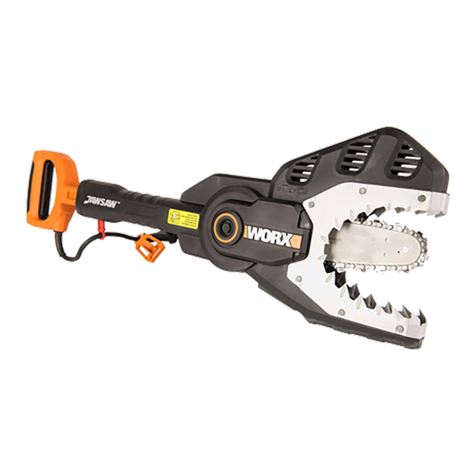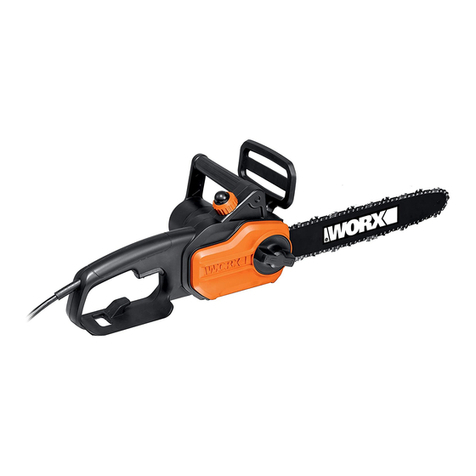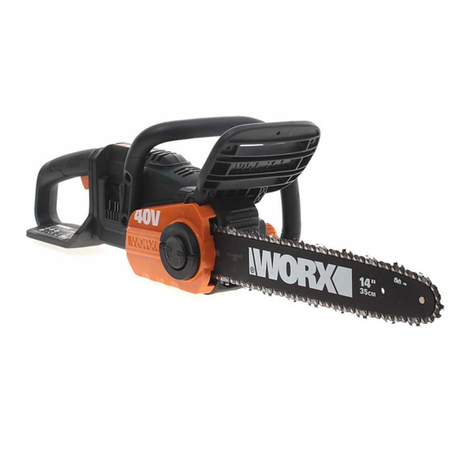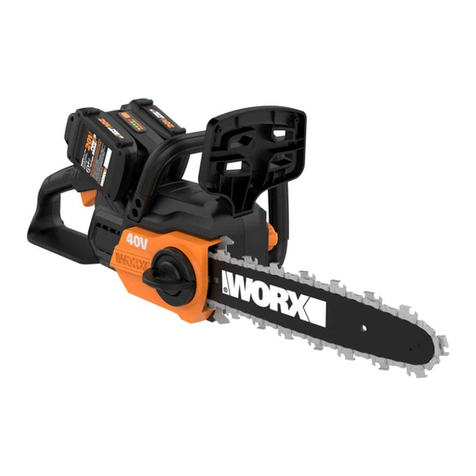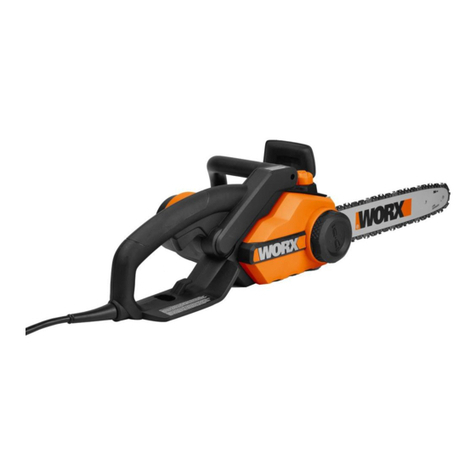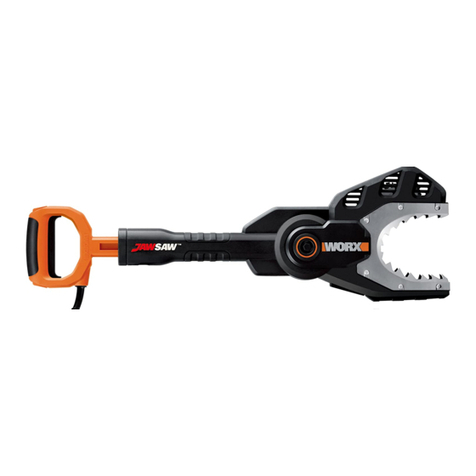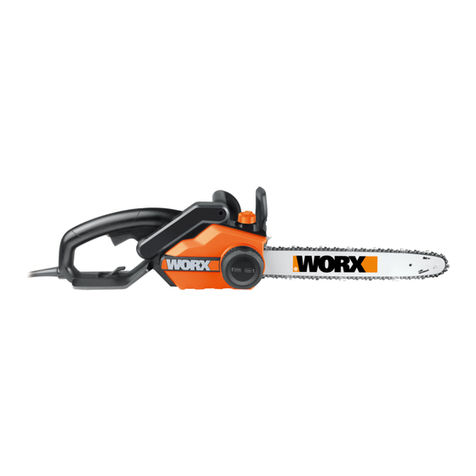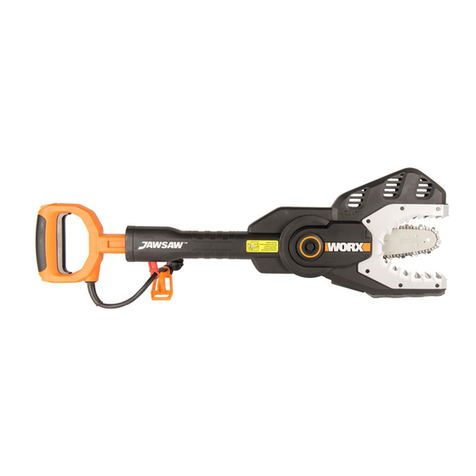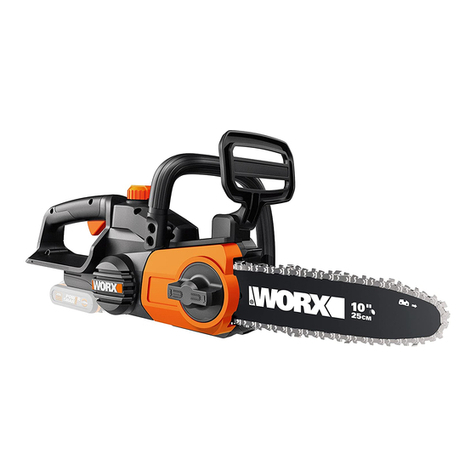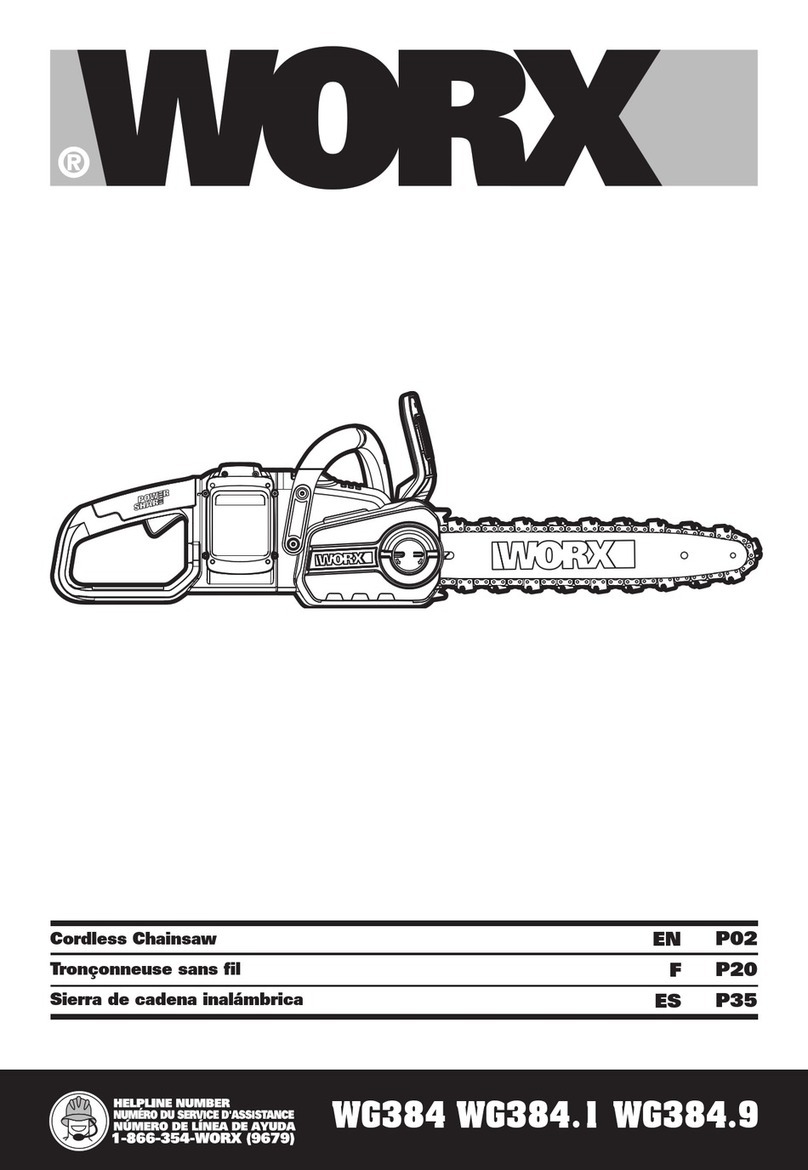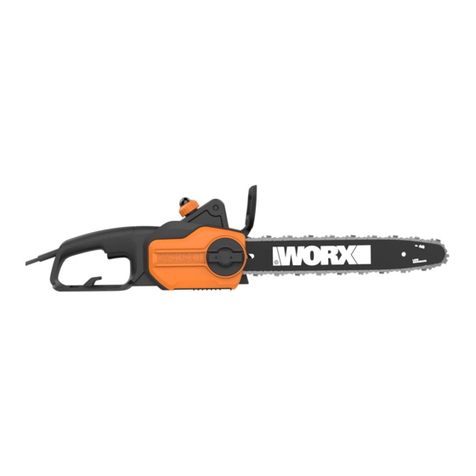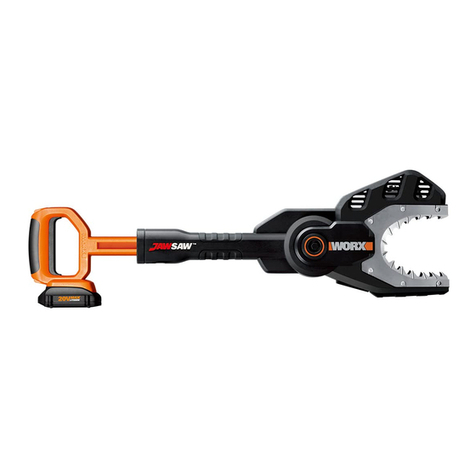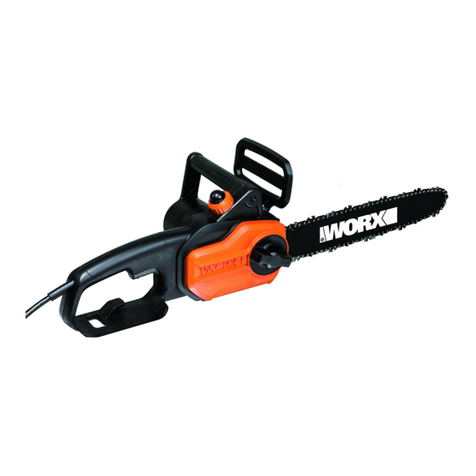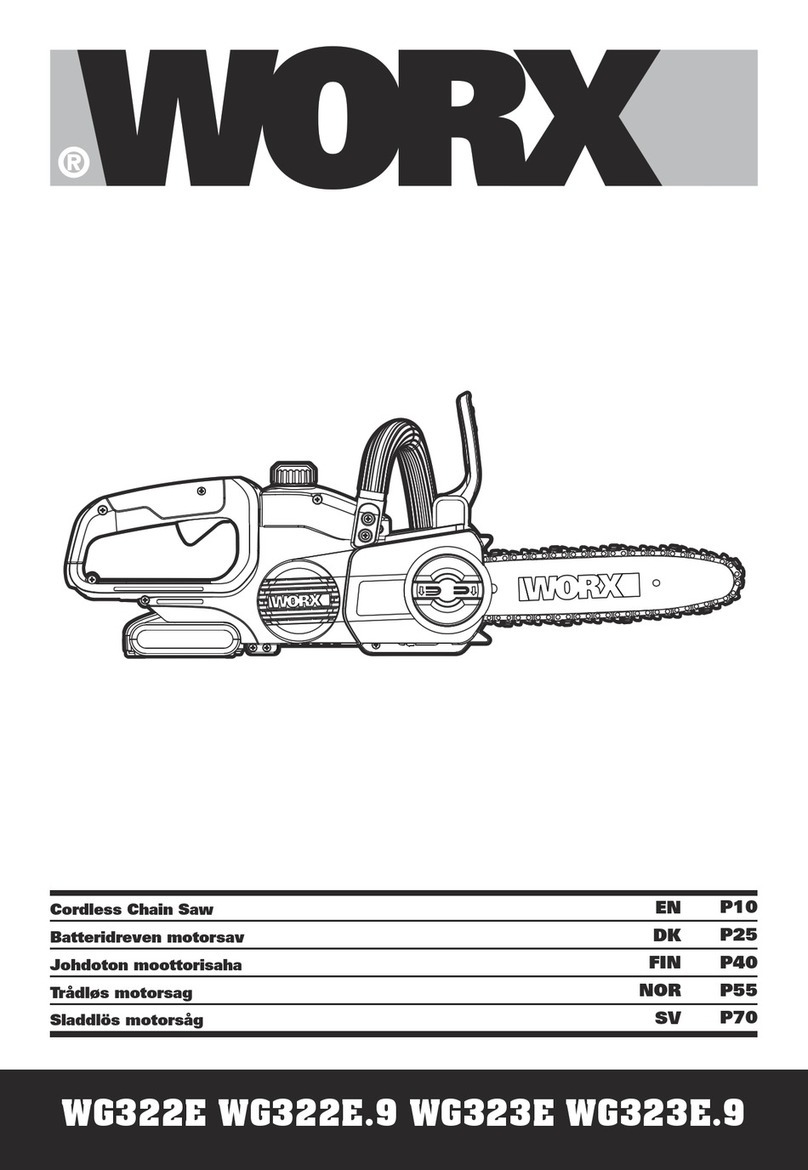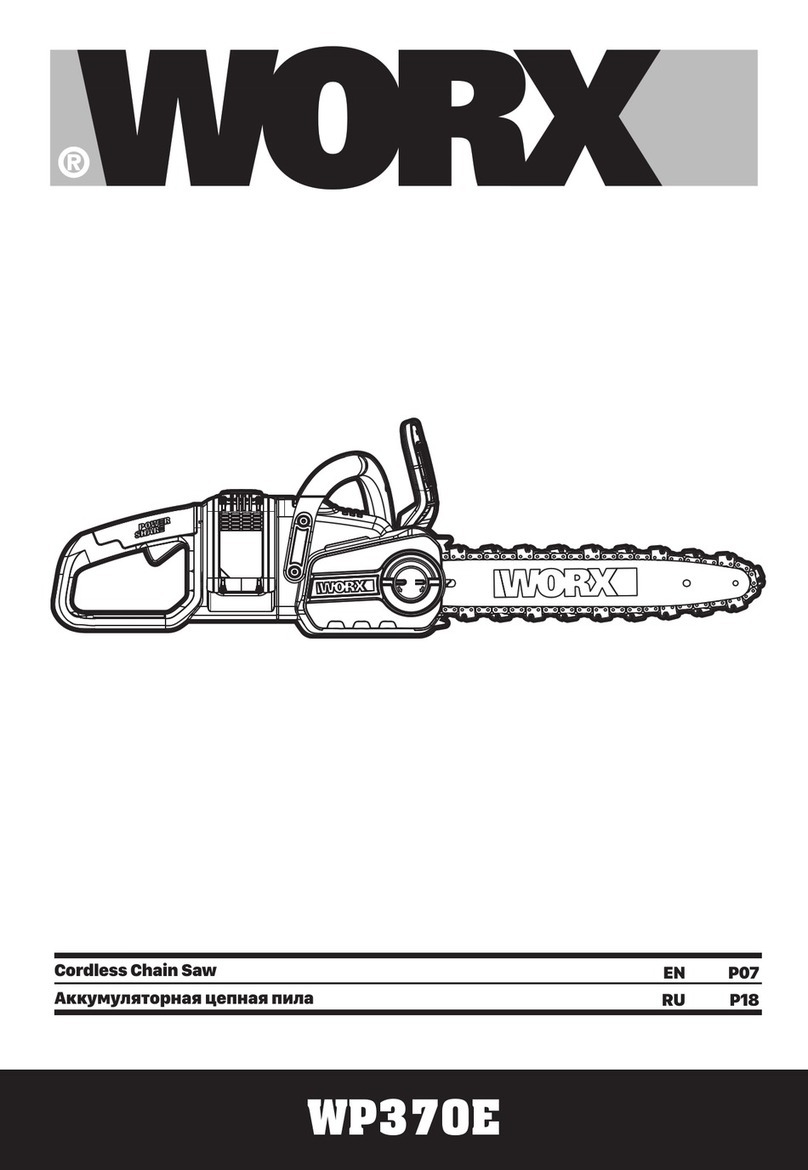Chain Saw WG303E
4
brush and saplings. The slender
material may catch the saw chain and
be whipped toward you or pull you off
balance.
9. Carry the chain saw by the front
handle with the chain saw switched
off and away from your body. When
transporting or storing the chain
saw always fit the guide bar cover.
Proper handling of the chain saw will
reduce the likelihood of accidental
contact with the moving saw chain.
10. Follow instructions for lubricating,
chain tensioning and changing
accessories. Improperly tensioned
or lubricated chain may either break or
increase the chance for kickback.
11. Keep handles dry, clean, and free
from oil and grease. Greasy, oily
handles are slippery causing loss of
control.
12. Cut wood only. Do not use chain
saw for purposes not intended. For
example: do not use chain saw for
cutting plastic, masonry or non-
wood building materials. Use of the
chain saw for operations different than
intended could result in a hazardous
situation
13. Do not use any attachments or
accessories not recommended
by the manufacturer. The use of
attachments or accessories not
recommended can result in serious
personal injury. To reduce the risk
of injury, the operator should use the
accessory or attachment according to the
instruction
14. We recommend that the first-time
user should, as a minimum practice,
cutting logs on a saw-horse or
cradle
15. Position the cord so that it will not
be caught on branches and the like,
during cutting.
16. Always wear safety goggles or
safety glasses with side shields
when operating tools. Failure to do
so could result in objects being thrown
into your eyes causing possible serious
injury.
17. To avoid injury from unexpected
starting or electrical shock during
assembly or adjustment, do not plug
the power cord into a source of
power.
18. When the machine is not in use
and to prevent unauthorized use,
the switch should be locked in the
“OFF” position.
CAUSES AND OPERATOR PREVENTION
OF KICKBACK:
1. Kickback may occur when the nose or tip of
the guide bar touches an object, or when the
wood closes in and pinches the saw chain in
the cut.
2.Tip contact in some cases may cause a
sudden reverse reaction, kicking the guide bar
up and back towards the operator.
3. Pinching the saw chain along the top of the
guide bar may push the guide bar rapidly back
towards the operator.
4. Either of these reactions may cause you to
lose control of the saw which could result in
serious personal injury. Do not rely exclusively
upon the safety devices built into your saw.
As a chain saw user, you should take several
steps to keep your cutting jobs free from
accident or injury.
5. Kickback is the result of tool misuse and/or
incorrect operating procedures or conditions
and can be avoided by taking proper
precautions as given below:
• Maintain a firm grip, with thumbs
and fingers encircling the chain saw
handles, with both hands on the saw
and position your body and arm to
allow you to resist kickback forces.
Kickback forces can be controlled by the
operator, if proper precautions are taken.
Do not let go of the chain saw.
• Maintain a firm grip, with thumbs
and fingers encircling the chain saw
handles, with both hands on the saw
and position your body and arm to
allow you to resist kickback forces.
Kickback forces can be controlled by
the operator, if proper precautions
are taken. Do not let go of the chain saw.
• Do not overreach and do not cut
